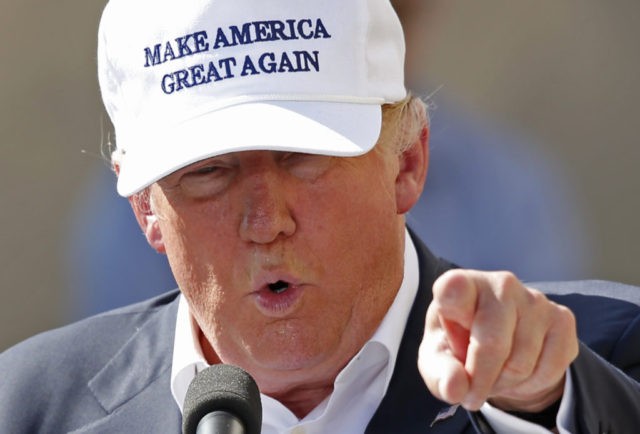Factory production was weaker than expected in November but not because of the Trump administration’s tariffs on steel, aluminum, and imports from China.
Industrial production rose 0.6% in November, the Federal Reserve reported Friday. That gain, the biggest gain in three months, was largely due to increased utility usage driven by colder weather. Manufacturing production was flat with the prior month and revised figures show it fell in October.
Heavy Metal Love Story
Critics of the Trump administration have been predicting that tariffs on steel and aluminum, which began to be imposed in late March, would ultimately backfire on the U.S. economy by hurting metals-using manufacturers. Some have claimed, without evidence, that domestic manufacturers are already hurting because of the tariffs.
The November data provide no support for those claims. If the metals tariffs were responsible for the weak factory production, the weakness would show up most strongly in durable goods manufacturing. But durables manufacturing rose a seasonally adjusted 0.2 percent to its highest level of the year in November. Indeed, durable goods manufacturing has been on the rise ever since the metals tariffs were introduced and 3 percent above last year’s production.
Looking deeper into the data make the lack of a tariff-drag even more obvious. Production in the auto sector, a big metals using industry, rose 0.3 percent in November and is up 3.2 percent for the year. Machinery production was up 0.5 percent for the month and is up an impressive 6.2 percent for the year. Fabricated metal products, which mostly consists of shaping metals that are used in other consumer products, saw a slight decline of 0.1 percent for the month but this is up 5.1 percent for the year. Appliance manufacturing rose 0.3 percent and is up 3.2 percent for the year.
“If the Trump tariffs are indeed going to bite, then you’d think that some evidence would be visible eight months later. But the new Fed data make clear that this evidence still hasn’t appeared,” Alan Tonelson wrote Friday in a post examining the impact on metal-using sectors.
And, of course, production was up for metal production. U.S. metals mill production rose 2.4 percent in November and is up 5.1 percent for the year. On net, then, the metals tariffs are adding to production.
In short, despite lots of complaints about metals tariffs from producers who would like their materials to be cheaper, the data demonstrate that the American economy loves the protection we’ve provided for our steel and aluminum industries.
The Real China Connection
The China tariffs, which hit inputs into lots of U.S. produced goods, also do not seem to be hurting U.S. factory production. These would show up in the data for computers and electronics, which rose 0.2 percent in November and is up 5.1 percent for the year. Appliances, too, have a good deal of Chinese made components–and as noted above, production here is still rising.
The weakness in the November data was driven by factories making nondurable–that is, consumable–goods. These include foods, beverages, clothing, paper, and gasoline. None of these are notably reliant on inputs imported from China or metals–and all of them saw production declines in November. Publishing, wood products, and logging also declined. Furniture manufacturing was flat.
As Tonelson points out, there are signs that production gains have slowed even in metals using sectors. But the declines are much more pronounced in non-durables and non-metals production. And the only place where there are year-over-year contractions is in nondurable goods.
The big laggards in nondurables are petroleum products, apparel, printing, and plastic or rubber products. Petroleum production is primarily refining oil into fuel and production here has likely declined because of the steep fall in gasoline. Printing is a business in a long-term secular decline.
That leaves us with apparel and plastics, which have seen annual declines of 3.6 percent and 1.5 percent respectively. These are segments of the economy that face severe import competition and data suggests that rising imports may be behind the decline in U.S. production. Prices in apparel rose 0.3 percent in November but prices of imported apparel fell 0.1 percent. Rubber and plastic prices were flat in November but were up in the previous three months. Import prices for these fell in two out of the four months, and were flat in the other two.
In other words, the production slowdown is not being driven by tariffs–it is being driven by imports. The strong dollar and China’s efforts to keep its exports competitive despite U.S. tariffs are the most likely culprits. And the best solution to the slowdown may be precisely what the Trump administration’s critics believe is the problem: raising tariffs.

COMMENTS
Please let us know if you're having issues with commenting.